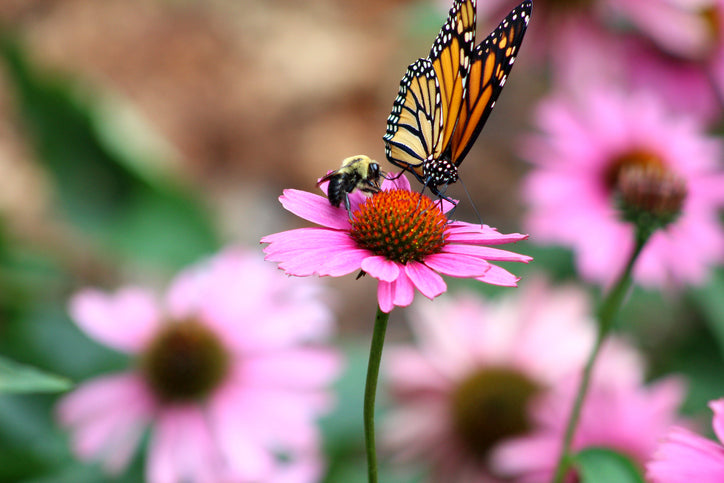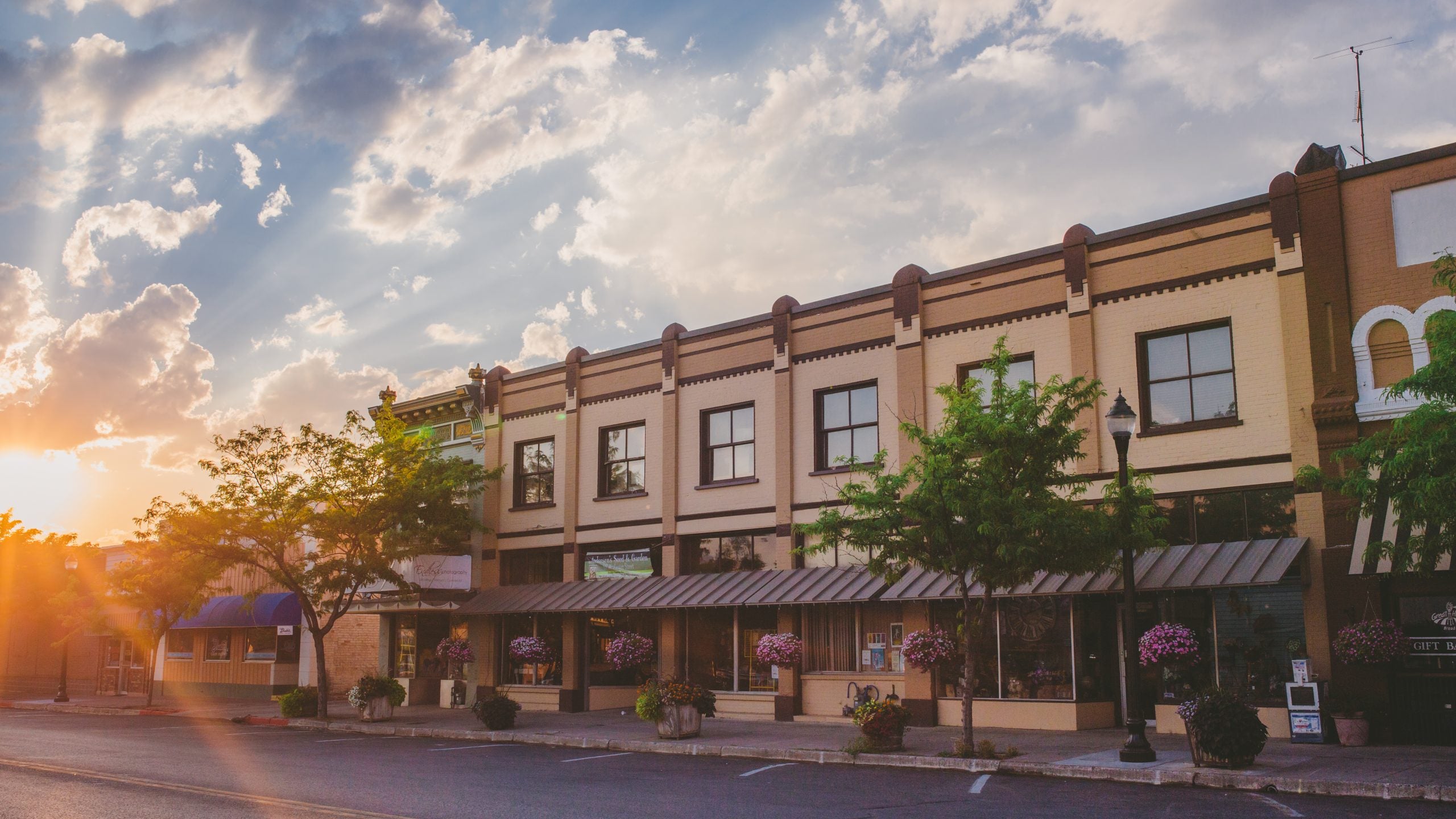Garden of Attraction - A Haven for Pollinators

Garden of Attraction - A Haven for Pollinators
Transform your yard into a vibrant, scented garden that attracts pollinators and enhances the beauty of your outdoor space.
Keep Reading to Learn More
Garden of Attraction - A Haven for Pollinators
For the longest time I have wanted to make a section of my yard a scented garden. We have a portion of our yard that doesn’t get much use, as its the furthest point from our access points, the driveway, and the areas that we use to recreate. It would make an excellent place for a scented garden, with a fountain to add tranquility, and a nice bench to sit on and enjoy. I know a lot of great plants that have amazing scents that cycle throughout the year. As I’ve thought about this area of my yard, I keep thinking that it would be an amazing place to attract pollinators as well - bees, butterflies, hummingbirds, and other insects that are essential to our plant environment. I’m going to show you how to build a place to attract pollinators.
Creating a garden environment that is attractive to pollinators helps preserve their habitats and populations, ultimately facilitating the process of pollination - how the pollen from the male parts of a flower is moved to the female parts of the the same or a different flower of the same species. This movement of pollen results in the fertilization of the flower and the production of fruits and seeds. So important for our gardens!
The first thing to consider when planning a new pollinator garden is location. Nearly all of the insects that pollinate flowers like full sun. Think of butterflies that love to sun themselves and flex their wings and bees than buzz into wide open flowers seeking their delicious nectar and pollen - they are almost always in the sun. Having an adjacent water source is essential also. Pollinating insects need water as well as the sun. This factor is what made me think about my scented garden as a perfect environment for the insects that pollinate my plants as a water feature would more than qualify for a perfect water source. You can also use a bird bath or hummingbird feeders; even open bowls of water will work.
Next, we are going to use our location to create a diverse ecosystem that is more than a food source for our pollinators. They like places that provide shelter, food, water, access to other insects, and a place to reproduce and leave eggs. Plan on having a mixture of different plants that might provide this type of habitat - shrubs, evergreens, trees, bark mulch, and even dead and decaying materials like twigs, logs and leaves. All these materials provide places where these insects like to congregate, interact, and find food. Most pollinators like a fairly dense planting, so don’t be afraid to over-plant just a little; don’t skimp on the plant material. Some pollinators like flat stones or pavers too for a place to warm up in the sun on colder mornings.
Keep in mind that you will need to assess your use of pesticides in your garden. While there are insecticides that are less toxic or non-toxic to pollinators, many insecticides are broad spectrum and will kill your beneficial insects as well. You may have to adjust your use of insecticides or herbicides to maintain a healthy environment for your newly attracted friends. You may need to adjust your tolerance for some damaging insects to prevent harming your pollinators.
When it comes to food sources, keep in mind that your pollinators need food throughout the season, and a variety of colors is what attracts them most. Dense sections of flowering plants are more likely to attract insects than a haphazard splash of color. Plant in dense clumps of the same flowers, so that the insects we are trying to attract can see what they want: Food! Look for varieties of flowers - both perennial and annual for season long color - that attract all sorts of pollinators. Then, try to combine perennials that bloom at different times of the year. For example, pollinator favorites of cranesbill geranium, creeping phlox, columbine, brunera and bergenia all bloom in early spring. Add to those some mid-summer favorites like echinacea, salvia, monarda, yarrow, and catmint. Then, for some late summer color and food sources, we recommend Russian sage, butterfly weed, golden rod (can be an allergy trigger for some), ligularia, rudbeckia, and bugbane. See how these plants can all have different bloom times, different colors, and attract a different pollinator? For a more complete list of plants that attract pollinators, you can find many sources online, or locally at garden centers like Anderson’s Seed & Garden.
Along with different colors and bloom times, it is very helpful to offer flowers that have different shapes that attract different insect pollinators. Daisy shaped flowers, or composite flowers attract butterflies and beneficial wasps. Umbrella shaped flowers like yarrow and coriander make perfect landing pads for butterflies and provide good food sources for flies and short-tongued bees. Trumpet shaped flowers that have a flat lower lip like phlox and penstemon make a good landing pad for bees. And complex flowers like columbine and bleeding hearts are favorites of pollinators with long tongues. As you can see, it takes a lot of planning to come up with a diverse mix of plants and flowers to keep your pollinators interested all season long.
Don’t forget about annual flowers that are good for pollinators as well. We love to have asters, bachelor buttons, zinnia, calendula, cosmos, and many other flowers in our vegetable garden as well as around the yard to provide season long color and lots of pollen for your hungry pollinators. Even though they must be planted every year, in many cases, your annual flowers will drop enough seed to come back year after year. We also encourage and offer many mixtures of native wildflowers that attract bees, butterflies, and hummingbirds. These take a little more time to get established, but once they take hold, they will produce a plethora of interesting blooms all summer long.
Gardening can take a lot of careful planning and a fair amount of work to get the results that you desire. The journey is an essential part of the enjoyment though, and planning for and executing that plan to bring more pollinators into your yard is a worthwhile pastime. Remember, this doesn’t have to be done all in one season, either. It can take a few years or even a decade to accumulate all the plants you desire, or to really get your pollinator Wildflower Garden to produce. Be patient. Over time it will reward you for your labors, and be a pleasant and enjoyable place to frequent in your yard - for the insects, as well as for you.

